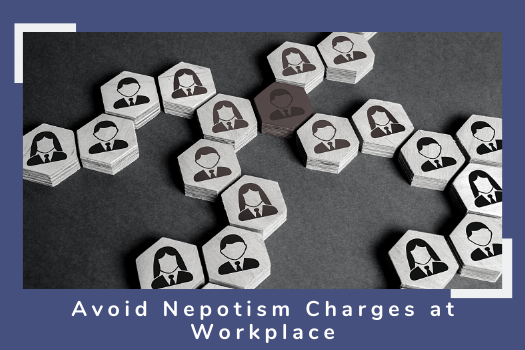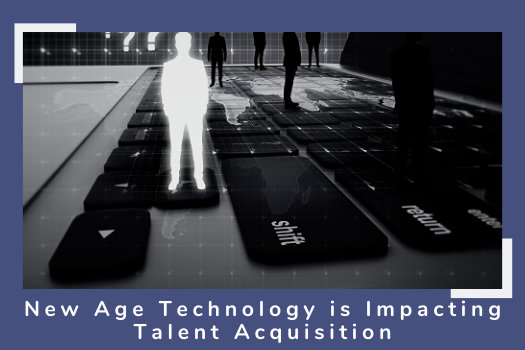The best qualified candidate may not always get the job.
The function of HR stands on four pillars – Talent Acquisition, Talent Development (L&D), Compensation and Benefits (including Payroll) and Legal & Compliance. These FOUR pillars are then connected to one another with an invisible thread – TECHNOLOGY. In our endeavour to get inspirational stories, we have been trying to reach out to leaders with vast and in-depth experience in each of the HR sub-function. Today, we are sharing the journey of Geetanjali Wheeler. She is a dynamic and result oriented L&D professional with an experience of close to 15 years in conceptualizing, designing and implementing training & development strategy to meet business goals. In her current assignment, she is leading Training & Development for the Enterprise vertical of a large Telecom brand in the country where the L&D practices aim at developing an organization that’s agile and digital. Thank you, Geetanjali, for agreeing to take us through your journey and also sharing insights about your learning’s and challenges.
Let’s start.
Disclaimer: The responses to the questions are solely the views of the interviewee as a professional and do not reflect that of the Organisation she works for
We would be pleased to learn about your professional journey from the beginning. So, please share with us about your first job interview.
Since the focus here is to share my learning, instead of my first job interview, let me share about my first interview for an IJP (Internal Job posting). Early in my career and within a very short time of my joining the organization in question, I was selected to apply for an IJP. I was very excited and happy that my good work was valued.
I felt I was rocking my interview with my answers because I knew the value I brought in and could picture the value add I could do in my new role. My final question was a scenario where I was asked to do something unethical to benefit a unit. My immediate response was absolutely not! The scenario kept changing after this, in terms of who was asking me to do it and why...I kept saying no...Even, after the entry of CEO into the scenario. I felt I was too pressurized and that clearly showed on my face…and in my heart I thought I would never work for a company like that!
Do you think I got the job?
Of course, not; I would not have given that job to myself..
I was upset at that time but thinking about it today, I’m happy that in the primitive stage itself my value system was guiding me to do the right thing. Nothing is more important than integrity – Customer, Business and You!
This interaction was big learning for me about being confident and respecting the value system that defines your character.
In your professional journey, you will find people who believe in you – value them and maintain their trust.
Which, according to you was the most intriguing interview? Can you share your experience in detail?
This was more than 4 years ago… I was in Europe at that time appearing for an interview on Skype for a position based in India. I think of it many times and I always say that it was one of the most difficult yet most enthralling interviews of my professional life. The gentleman who was going to interview me was the Chief Business Officer of the unit and had an overly impressive profile. I read his interviews and researched him online. I prepared and looked forward to my conversation with him.
I think my interview lasted for about 30 minutes and I felt every minute of it. He had this cold look on his face and would interrupt every answer I attempted to give. None of the questions were related to each other… even though he was from the business he asked me questions that a CHRO or CLO would ask. I felt I was disadvantaged doing this interview over Skype as my attempt to read his body language and facial expressions kept failing. At the end of the gruesome 30 minutes, he said “This role is very important for me and I will find the right person for it… till that time I will keep rejecting no matter how much time it takes”.
Well… I did get the job and I was glad that I was his chosen candidate for I knew that I would learn a lot in this role. He is also my “lighthouse” and guides me in the darkest times. In your professional journey, you will find people who believe in you – value them and maintain their trust.
Something that I was made to realize by another leader I truly admire about this incident is that the best-qualified candidate may not always get the job. The person interviewing has a job to pick the perfect candidate for the situation which could be influenced by factors like the balance of the team, its culture or gaps identified to be filled. So, don’t give up and have faith!
You are an HR Practitioner for so many years. Could you please tell us why did you choose this profession? If not in L&D, what another profession you would have chosen?
Although I was happy with what I was doing 11 years ago, it was not my passion. One day, I was asked if I could train a couple of batches because of my subject matter expertise. At the end of the first day itself, I realized that I have found my passion and soon after, made efforts to understand L&D as a career choice.
I love interacting with people, motivating them and adding value to their lives. Like they say, “Teach a man/woman to fish and you feed him/her for a lifetime.” Another quote that’s valuable for me is:
“The growth and development of people is the highest calling of leadership.” – Harvey Firestone.
When I see people develop, excel and drive business as a result of it… that’s like making a century on the cricket field! I just love what I do and I’m excited every single day to do more, push and expand my boundaries and learn more. It makes me happy!
The way I see my role is to play an instrumental role in making my organization successful. I do that by developing key people capabilities required for the business to be successful today and be future ready. It’s a complex role that requires strategic thinking, creativity, to set people up for success, keep up with the changes in the environment and build skills that the organization needs.
To answer the second part of the question, I cannot imagine myself in any other role than in Capability or Talent development as it’s my first love. So, it’s difficult to think of anything else. However, if I have to take a pick, I would explore Customer Experience.
Having worked in a leadership role, what do you think are the expectations of a CEO or the Management Team from L&D?
HR and its functions just cannot afford to be support functions anymore. We must sit at the table and be a Business driver. Our role must be more strategic and expand beyond the traditional role.
The Business expects its L&D team to win the race for them without actually running on the tracks… so the role is to develop a winning team that will do it. Therefore, you are a Coach, a Guide and a Catalyst! Conventionally, the CEO or the senior leadership expects its L&D team to:
- Be aligned to Business goals and strategy to define people capabilities: Although this is not a new expectation, a “forward-looking” L&D team must have its own vision based on it. L&D must expand beyond traditional methods to bring about transformation in employees whether that’s being digital, thinking agile or enabling collaboration. For e.g. agile is a mindset change and cannot be achieved by just doing pieces of training. We must bring the behavior alive by taking up projects and celebrating success with SLT sponsorship.
- Position “Opportunities to learn” as a significant part of EVP (Employee Value Proposition) to attract & retain talent: According to many surveys done, opportunities to learn and grow are one of the biggest drivers in building a compelling EVP. Learning opportunities ensure that employees are motivated and engaged. This is true across the diversity of generations in the workplace today and particularly for Gen Y and now Gen Z.
- Establish a Return on Expectations for the training interventions: More than ROI, I think ROE – Return on Expectations is what we need to deliver in terms of Business metrics that could be related to Financial, Customer, Internal processes or Organizational capability (Tools, Technology and People). In my view, using the Kirkpatrick’s framework enables you to achieve this.
- Develop future “Talent”: Organizations are continuously evolving in how they do business, meet customer needs and shareholder expectations. We know that the half-life of a learned skill is reducing and the employees have to be continually skilled to be future ready. With disruption at the core of where we are today, imagine the quality of leaders we need! Many research papers suggest that companies that invest in leadership development are more successful than others.
- Be a trusted advisor by performance consulting: One of the biggest mistakes L&D can commit is to allow training to be treated as a panacea for all performance issues. A performance issue can be solved by understanding the cause of the issue and a true L&D partner will act as a consultant and enable it.
A great plan and design if not executed and delivered correctly defeats the whole objective.
How do you ensure that the training is effective for the employee?
The effectiveness of training depends upon how well we begin with the end in mind. As L&D, do we understand the pulse of the business, our people? If the learning does have to be pushed down the system then it’s far from having effective results. Technology has opened up learning avenues across the globe. The learners today are far more informed and know that they are responsible for their own careers. The challenge is to be valuable for the learners in terms of objectives e.g. to improve current performance, career enhancement, be future-fit or take up newer projects, roles and responsibilities.
Also, in my experience, it is important to follow the Training & Development process because as a framework it ensures alignment and governance.
- Training Needs: The classification of Training Needs can be done at various levels such as Organisation / Function and Individual using correct inputs. At an individual level, personalized learning-path has more impact.
- Training Design: The design from the start must be built with a target of achieving the training objectives. The objectives could be short-term (e.g. improve on-job-performance) or long-term (e.g. future strategies e.g. future-fit, agile, digital). The design must take into consideration:
- Answering “What’s In It For Me?” for the target audience
- The different learning styles
- The best possible methods within the available resources and
- How will the results be measured?
- Training Delivery: A great plan and design if not executed and delivered correctly defeats the whole objective. The experience and engagement of the learners need to be mapped just like customer experience.
- Training Evaluation: It’s important to go beyond assessing the reaction of the participants or the knowledge they have gained. The objectives that were set out at the beginning of the program and defined in terms of expectations have to be measured.
HR is at the crossroads, yet again. According to you, what will be the impact of Artificial Intelligence (AI), Robots, etc. on the future of HR Function? Please also highlight how social media has changed the world of HR practitioners?
Industry 4.0 is changing the businesses and so its impact on the workplace is inevitable. This is not just limited to the employees in the organization but scopes in those outside company balance sheets and offices!
Global Human Capital Trends 2017 by Deloitte states that the half-life of a learned skill is at 5 years and will reduce further. Therefore, the pace of disruption, the half-life of skills and the VUCA world makes the role of L&D even more critical. We know that the roles that exist today may not exist tomorrow and that there will be new roles that don’t exist today.
In the future, we will also be making policies and learning paths for Robots and Humans co-existing in the workplace!
New technologies will further influence dynamics within HR and its functions. Some we already see e.g. predictive indicators on attrition, identifying correct talent for recruitment, promotions, job rotations, using Blockchain for records, personalized learning experiences and improving training impact with VR / AR. There is a clear linkage between factors impacting the business and its people. The success of L&D is also based on its readiness to support future HR strategy of the Organisation. For example, today we typically see demand for digital and technology skills, higher cognitive skills or change in skills e.g. leadership, social, EQ and even reduction in jobs that are repetitive in nature.
The way L&D structures learning also needs to change e.g. training on AI or Big data cannot be limited to a classroom or online learning. The blended learning must include aspects of on-the-job or projects. On the content, for example, the strategy cannot be just to create or buy off the shelf… but have a blend of creativity, curate or co-create content.
It also must be noted that the HR or L&D cannot bring about transformation in business and people if they themselves do not transform e.g. driving a digital agenda within, being agile, using automation or using predictive insights for decision making!
Social Media expanded from being a platform for interactions between friends and families to changing how businesses are done. For HR, it changed the way employees are attracted and hired. Companies not just use social media today for marketing but also to create EVP. The platform enables collaboration, communication, engagement, and motivation. The platform is also gaining popularity for promoting peer learning, best practice sharing and connecting with experts. According to a report published on ET, In India, people spend about 3 hours a day on Smartphones. So no wonder that mobile learning is picking up giving power to the employees to learn anytime, anywhere on any device!
To win, we must stay relevant and updated by demonstrating Learning agility.
What are the critical traits of a successful L&D Expert?
Basic qualities like good communication, networking, interpersonal skills, ability to connect at all levels in the organization, passion for learning and leading by example are must-haves.
The functional traits are essential too without which we will not be viewed as a Business driver but as a support function or cost center.
- Strategic alignment to Business Goals: Even though this seems like “basic”, many research shows that L&D teams are not always aligned. This is the biggest reason for conflicting priorities and businesses not supporting L&D. For e.g. the L&D roadmap, interventions, calendar, and initiatives – how are they supporting the company to achieve its goals?
- Understand the business: It’s not just enough to know about the business, we need to understand it to support it.
- Mission and Vision
- Business model
- Industry & vertical trends and challenges
- Customers – what do they expect?
- Competition landscape
- Environment internal and external
- Employees – background, experience, career, etc
I have learned that closely working with the business, being part of their meetings, spending time with front line and even meeting customers will brilliantly add value to you.
- Partnership with Business and HR team: The Business strategy paints the People Strategy. L&D can become a business driver by growing key people capabilities. This is not possible without being in Partnership with Business and HR teams. This is how the role of L&D expands into attracting, developing and retaining talent.
- Be a champion of change: L&D can play a huge role in enabling organizations by being a champion of change. This can be done by empowering employees to manage change -managing self and teams during the process.
- Deep expertise on T&D Process: The expertise enables L&D to act as a consultant to the business and address challenges. Just like market research, customer analysis, product research, etc., the capability needs of the organization have to be reviewed and redefined continuously.
Without an understanding of T&D processes, it is not possible to demonstrate the value we will bring on the table
- Be on top of L&D Trends: It is important for an L&D professional to know about the latest trends not limited to the industry of the business but also about HR and L&D as a function. We need to continually make learning more impactful, deliver ROE for the business and also define the future skills roadmap.
For e.g.: Take up formal education in your field that adds to your credibility, attend conferences or seminars in-person or virtually, join correct groups on social media, subscribe to relevant magazines and reports etc.
It’s important to accept that our world is dominated by disruption. To win, we must stay relevant and updated by demonstrating Learning agility. Keep challenging your own status-quo!
Share an experience where you had to deal with a difficult person and how did you handle the situation?
In 15 years of my work experience, I’ve learned that people are “not” difficult, situations are! It could be a difficult situation involving a boss, colleague, partner, customer, auditor or even a team member! Our ability to manage our own and other’s emotions is defined by Emotional Intelligence (EQ). There are many articles that I have read that suggest that EQ is probably more important than IQ for the success of a leader. We all have scope to improve and personally for me researching on topics like EQ, Transactional analysis, types of personalities has helped.
The toughest lesson I learned was from an internal stakeholder. He was popular in the company for being the most difficult person to get support from for any initiative especially if it was anything that involved his team. Although I was aware of this, I didn’t think it would be a challenge for this project we had undertaken because it was perfectly aligned to the Business goals of the organization. To my surprise, I was wrong! He had more problems with it than anyone else and that created huge roadblocks for the project to take off.
I learned that I could not take this personally and took a step back. I decided to start again and had to change my approach. With my eyes on the goal, this time I started with this stakeholder. I focused on knowing this person and listened. I took help from my eco-system when needed to keep myself aligned. A couple of months later, the same project were implemented successfully.
What I learned was:
- The importance of communication channel and keeping it open and transparent
- Ensure alignment since people cannot always get the big picture
- Give more importance to logic and rationale – people mostly get that!
- We need to be flexible as situations will not always be the same situations
- It’s important to be calm and not respond to emotions with emotions
- Introspect and course correct – you cannot be right all the time
Can you pick a training session which you consider is the most successful? Please share in detail the noticeable improvements in the person’s/team knowledge or skill post training.
When I started my journey in L&D, I was thrilled with the thought of achieving “Level 4” on Kirkpatrick’s Training evaluation model. What I have learned from the model is that to achieve Level 4 -“Business outcomes”, it’s important to achieve Level 3 – “Behaviour” as there is a strong correlation between the two levels.
We already did training that aimed to increase customer experience, First-time resolution or reduce errors that gave us the recognition from the business. However, I wanted to do something that helped improve the top line for the business. It sounded like a herculean task since seldom training interventions are directly associated with impact in terms of revenue, profitability or productivity. Then it was also about Business agreeing to acknowledge the role.
A senior leader at that time advised me that it’s about “contribution” and if the business needs are aligned, the support and acknowledgment would automatically come. The first such endeavour that was successful is very special to me. The project was to improve sales conversion ratio through improvement in opportunity management by following a defined framework. A learning path created with post-training reinforcement and support from management made it possible.
It is the most successful for me because of Business and L&D truly partnered with a single objective and celebrated the achievement.
Last question, what is your message for young and aspiring HR practitioners? What kind of growth opportunities should they look forward to? And, what key competencies one must possess to be successful in this profession?
My message is simple – find your passion! If you are in HR, then it must be because it’s your passion.
Start with the destination role in mind and work backward. What skills and experiences will you need to make it? Please connect with those who are established and successful…or to identify and observe them. If you can find a mentor, nothing like it! And if you have not yet found a mentor, don’t lose heart… your hunger to excel will ensure that you are continually learning.
For those starting, it’s important to develop the attitude of lifelong learning. Somewhere in the journey, it’s easy to forget what you must do about the learning’s you pick up. It’s crucial to introspect and course correct.
In terms of qualities, also be open to feedback, welcome diversity of thoughts and value those who give you feedback.
Remember, there is no one solution to all! The function requires you to have strategic alignment and creative thinking.
HR and its functions have immense growth opportunities. It’s important to invest in functional learning e.g. role of HR or L&D in the future, the impact of technological disruption at the workplace, etc. There are different HR companies and institutes now providing formal education in these spaces.
The must-have competencies to be successful in an L&D role are:
- Expertise in:
- Training Identification
- Training Design (including the understanding of Instructional Design)
- Training Delivery
- Training Evaluation
- Understanding of Business & Industry
- Consultation skills
- Understanding of L&D Trends
- Strategic thinking
- Staying curious and being Creative
- Coaching skills
Thank you.
*This interview was originally published on www.sanjeevhimachali.org. [Date: 25th April 2019]






